Insulation Tips
What Does R-Value Mean?
The R-Value of thermal insulation measures how resistant the insulation is to heat transfer. A higher R-value means a higher insulating rating.
In other words, the higher the R-Value, the better the product is at insulating your home. This means less heat loss in winter, less heat gain in summer and increased savings on your energy bill year round.
Why is R-Value Important?
The R-Value of an insulation product is the most important factor to consider if you want effective thermal insulation for your home.
It doesn’t matter what brand you choose or whether you go for glasswool, foilboard or polyester insulation. If you don’t choose the right R-Value, you won’t get the maximum benefits from your thermal insulation.
Whether you are building a new house, looking to retrofit ceiling insulation or thinking about renovating your home, make sure you consider the R-Value of your insulation products!
How is R-Value Calculated?
R-Value is calculated based on two factors:
- the thickness of the insulation product and
- its thermal conductivity.
R-Value = Thickness (m) / Thermal conductivity (W/mK)
The thickness of an insulation product and how poorly it conducts heat both affect its overall performance. The thicker the product, the higher the R-Value and the better the insulating power.
You can’t completely stop the flow of heat, but you can reduce the rate of heat flow by using materials which are not good at conducting heat. The higher the resistance to heat flow that the material offers, the higher the R-Value will be.
Choosing an R-Value
If you are building a new home then the minimum R-values are included in the energy report. These are the minimum R-values that you need to install in order for your house to receive a Certificate of Compliance (COC).
If you live in an existing home with no thermal insulation installed in the ceiling, then installing insulation of any R-Value will in most cases significantly reduce the amount of heat entering and leaving your home.
If you are planning a major renovation in an existing home, now is the time to think about R-Value! Retrofitting wall insulation in existing homes, topping up ceiling insulation and choosing the right underfloor insulation are all best done during the renovation phase.
What R-Value Should I Install?
To maximise the benefits of insulation for your home, it’s important to choose the right R-Value based on the climate of where you live and the design of your home. Cooler regions typically require higher R-Values.
If you live in Melbourne, Sydney or Adelaide then we recommend R2.5 for the external walls and R5.0 or R6.0 in the ceiling.
If you live in Brisbane, Perth or northern NSW, then we recommend a minimum of R2.0 wall insulation and R4.0 ceiling insulation.
| Location | Minimum R-Value for Ceilings | Minimum R-Value for Walls |
| Perth, Brisbane, Northern NSW | R4.0 | R2.0 |
| Sydney, Adelaide, Melbourne | R5.0 or R6.0 | R2.5 |
If you’re not sure what R-Value is right for your home based on your geographic location, speak to one of the insulation specialists at Pricewise Insulation. We would be happy to provide you with advice on selecting the ideal R-Value to maximise thermal efficiency in your home.
Upgrading to a Higher R-value
The rising cost of energy in Australia means that many homeowners are choosing to invest in higher R-values than those specified on their energy report.
A well-insulated home costs less money to heat and cool, emits less greenhouse gases and provides year round comfort.
The payback period for home insulation is generally around 3-5 years. That means it won’t take long for you to get back the cost of your insulation through savings on your power bill. And remember, the higher the R-Value, the greater the potential savings.
What About Floor, Midfloor and Internal Wall Insulation
The ceiling and walls are where the most heat loss and gain in a home occurs (up to 35% from the ceilings and up to 25% from the walls). For optimal energy efficiency, you should also consider insulating the internal walls, floors and between floors of multi-storey homes.
The ideal R-Value for underfloor insulation depends on the climate of your location and the design of your home. Typically we recommend a minimum of R2.0 and an upgrade to R2.5 for cooler locations such as Hobart, Melbourne and Adelaide.
With thermal insulation in the internal walls of your home, you can create climate zones for more energy efficient heating and cooling. What’s more, installing R2.5 acoustic insulation in the internal walls and between floors helps to create a more peaceful home.
You can also install R4.0 or higher ceiling insulation between floors. These batts are so thick that they will help to stop sound transfer, as well as improve the thermal performance of your home. Knauf Earthwool has recently released a new Sound Shield insulation product with R4.0 thermal rating, that is absolutely perfect for this application.
Do Insulation Batt Ratings Decrease Over Time?
Many people want to know if insulation has an expiry. When thermal insulation batts are installed correctly they remain effective for a long time, with most fibre insulation brands offering a 30-50 year guarantee. However, some older insulation products might not last as long, and moisture ingress due to poor sealing can lessen the effective life of insulation.
Over time, insulation batts will decrease in R-Value due to normal wear and tear. However, incorrect installation such as leaving gaps or compressing the batts can decrease their efficiency at a faster rate.
Insulation batts have a longer life than blown in insulation. That’s because blown in insulation can settle over time and lose efficiency, especially in the walls. To ensure a higher R-Value for longer, it’s best to choose insulation batts when retrofitting wall insulation in existing homes.
Older homes with insulation that was installed 15 or 20 years ago may need assessing as the R-Value could have decreased. In some cases new insulation can be installed over old insulation in the ceiling to boost the R-Value.
How Do I Know What R-Value I’m Getting?
The R-Value of an insulation product is clearly displayed by the manufacturer on the packaging. Search for any insulation product on the Pricewise Insulation website and you will find the R-Values indicated clearly.
For more information or to discuss your recommended insulation R- value needs, please contact us.



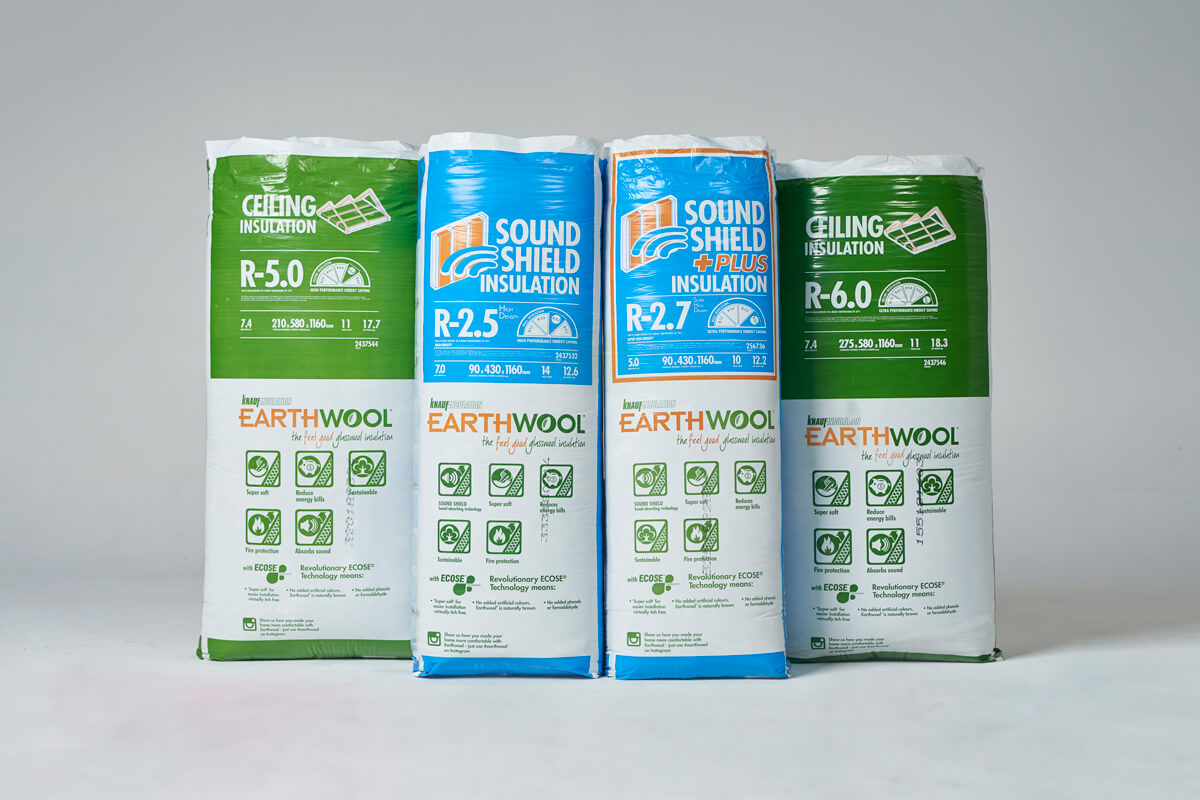
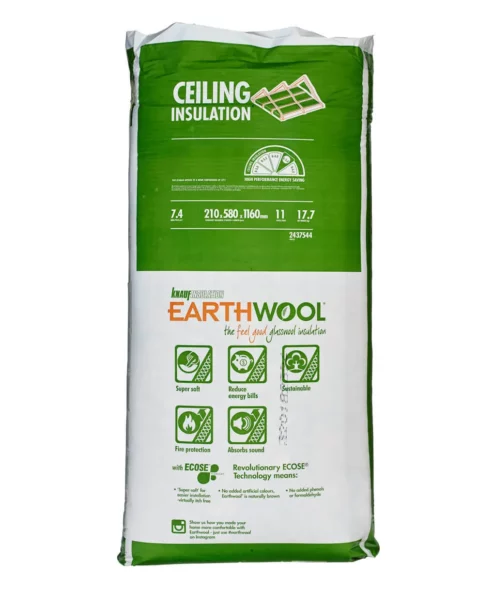
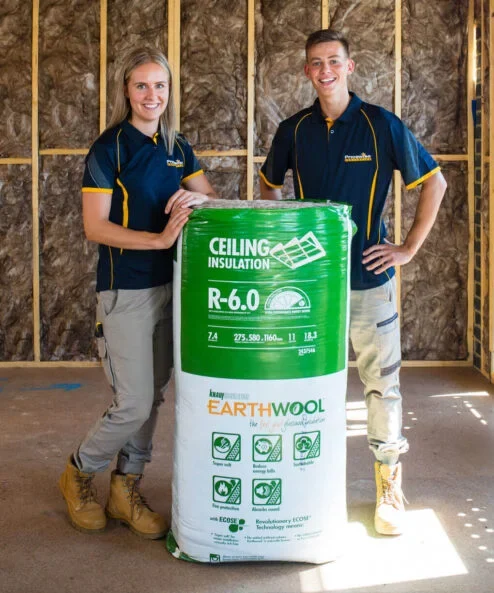
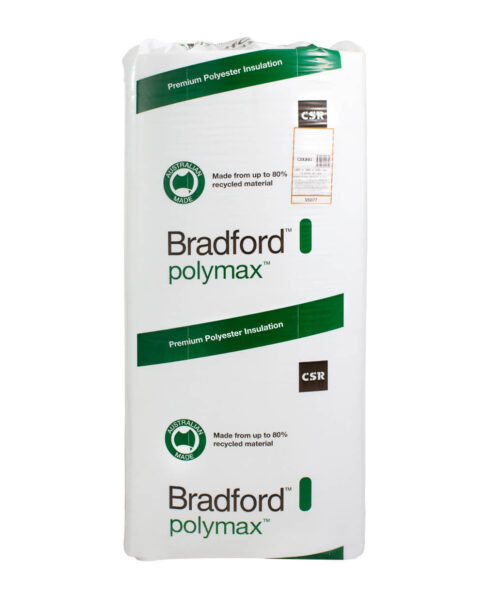
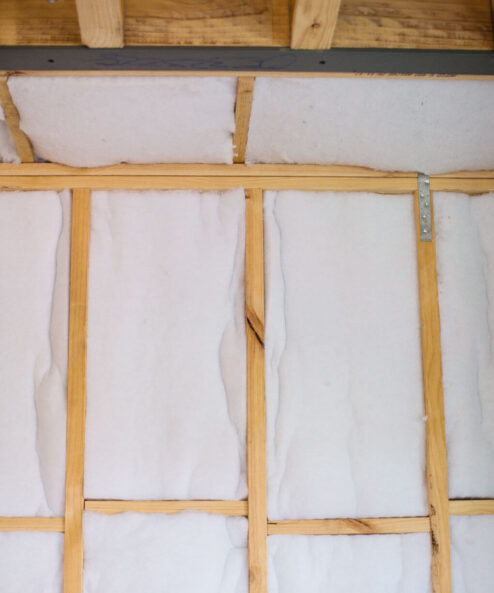
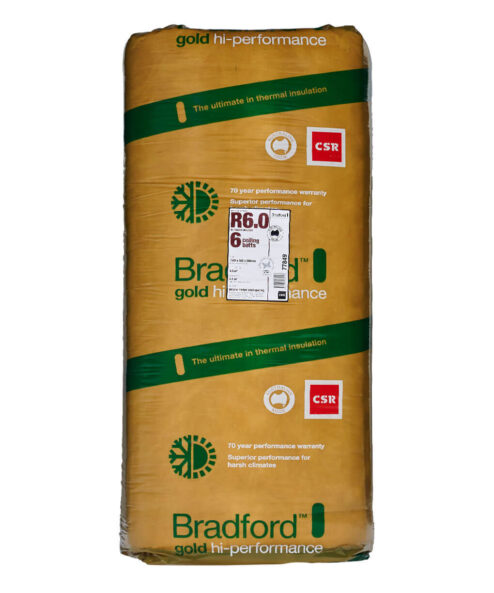
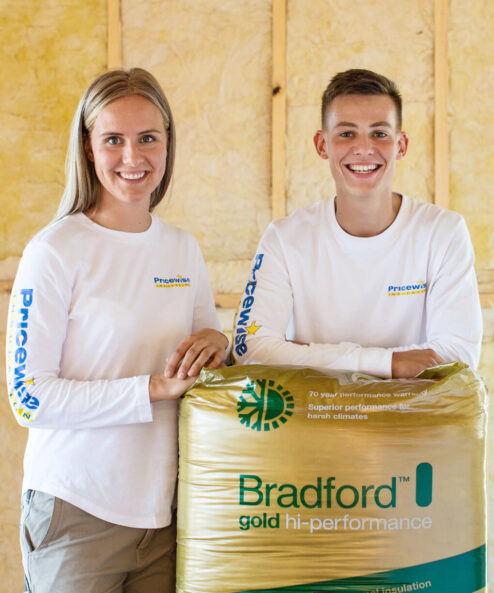
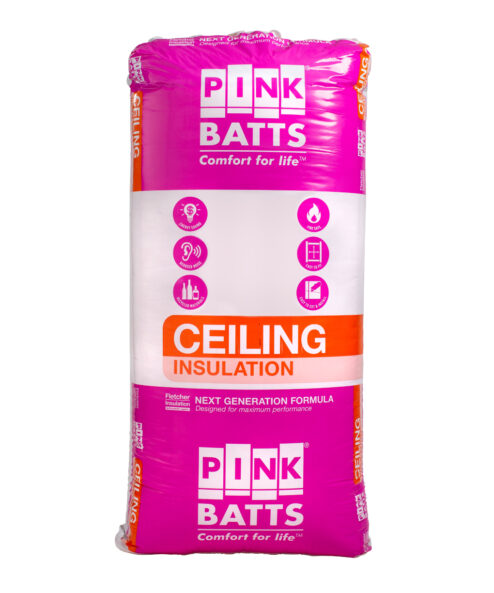
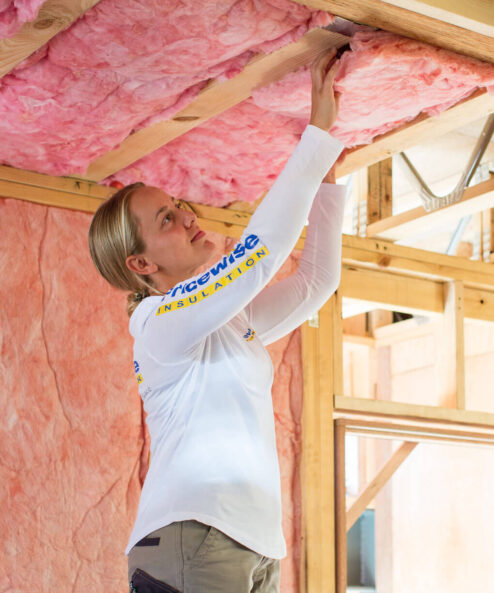
I need to insulat the garage ceiling 6.3m x 3m area
Hello Terry,
For a garage ceiling often R3.5 or R4.0 ceiling insulation will be sufficient. You could install a product such as Knauf Earthwool Ceiling Insulation and then plaster the ceiling to cover the insulation and create a clean finish. Please do not hesitate to contact us on 1300 729 639 if you have any further questions.
Cheers!
i need to insulate a sauna, i read R13 is recommended, do you sell anything with that high r value?
Hi Jacinta,
Thanks for your question! One of our staff members recently built their own sauna, so we are familiar with this question. Different countries have different R-value systems and an R13 elsewhere is not equivalent to an R13 here. For a sauna we recommend R2.5HD or R2.7HD Earthwool Wall Insulation and R4.0HD Earthwool Acoustic Insulation for the ceiling.This product is only 140mm thick, which makes it ideal for tight spaces like saunas.
If you have space to go higher in the ceiling then that’s also fine. However, the highest available rating in Australia is R7.0 which is around 290mm thick. An R5.0 or R6.0 product is also more than sufficient.If you have any further questions then please do not hesitate to contact us on 1300 729 639.
I have a house land package. included is R3.5 glasswoov batts in ceiling and r2 to external walls excluding garage and alfresco. Don’t seem a high enough ratings to me. Comments?
Hi Jude,
Thanks for your question regarding your new home. Many bulk built homes have low insulation ratings, because it’s how they keep their prices down. We would certainly recommend upgrading to R2.5HD wall insulation for the external walls, R2.0HD or R2.5HD for the internal walls and R5.0 or R6.0 for the ceiling. High Density (HD) insulation batts offer both thermal and acoustic benefits, whereas regular R2.0 batts are not as dense and are therefore must less effective at reducing noise. You could ask your builder about the cost of upgrading to these R-values before the plaster is installed. Feel free to contact our team on 1300 729 639 if you have any questions.
Cheers!
Pricewise Insulation
How different are R2.5 and R2.7 batts? It’s mentioned in your internal walls video, but from the names it sound like there’s barely any difference?
Hi Bozias,
Thanks for your question. In terms of thermal performance there isn’t a huge difference, however in terms of acoustic performance R2.5HD Earthwool Insulation Batts have a 20 kg/m3 rating and R2.7HD Earthwool Insulation Batts have a 27 kg/m3 rating, so there is quite a difference there. We generally recommend R2.7HD for theater rooms, home offices and any other rooms where noise might be an issue. Please do not hesitate to contact us on 1300 729 639 if you have any further questions.
Cheers!
Pricewise Insulation
Thank you for the reply! I understand now that the “problem” is that there’s the acoustic rating isn’t featured in the product name like the thermal rating is.
Hi, we are planning to build with AAC panel and the installer suggested to use ‘R2.5 Bulk insulation’. What is the different between R2.5 Bulk compare to R2.5 or 2.7 HD? How much ‘R-value’ can be increased if I wanna upgrade to HD? Thank you.
Hi Kay,
Thanks for your question. Regular R2.5 batts are too thick to fit into regular wall cavities, so you will probably find that the R2.5 product that your installer has recommend is a High Density (HD) / acoustic product. Just make sure that they are installing a reputable brand such as Earthwool Sound Shield, Bradford SoundScreen or Pink Batts. There is not a huge difference in the thermal performance of R2.5 versus R2.7 insulation, the main difference is the acoustic performance of these batts. We have a video about wall R-values here: https://www.youtube.com/watch?v=VPY3i-xnhV0. Feel free to contact us on 1300 729 639 if you have any further questions. Cheers!
I am building a new house in Townsville (QLD). What rating of insulation should I ask for?
Hi Xindu,
Thanks for your question. In addition to the foil sarking, we would recommend installing R2.0 wall insulation, R4.0 ceiling insulation and R2.0HD or R2.5HD acoustic insulation in the internal walls. If you are building a double storey home then we would also recommend installing acoustic insulation between floors. These recommendations are based on your climate in north Queenland. Feel free to give our team a call on 1300 729 639 if you have any further questions.
Cheers!
Hi, We have an existing patio ceiling, that has mould and gets condensation. Location Sunshine Coast QLD. I have had it checked and the only problem they can see is it has no insulation. What insulation would you recommend?
I need r 4.0 for walls any suggestions. It says 2.5 batt ansd layer of reflective darling however it’s a old house that has to come up to 6 star due to size of extension and don’t want to pull weatherboards off … foil board spray foam I’m open to suggestions
Hi Greg,
Thanks for your question. The ‘total R-value’ that a layer of foil insulation can achieve will depend on the type of wall system and how the product is installed. If you don’t want to remove the weatherboards, then it won’t be possible to install the foil insulation properly.
Blow-in wall insulation can achieve an R-rating of R2.3 when installed in a 90mm void behind weatherboards. We work with a company in Melbourne that offers this service if you would like a recommendation. Alternatively, you could remove the plasterboard and install R2.7 wall insulation batts.
If you have enough space then you could look at R4.0 Earthwool SoundShield Insulation Batts (140mm thick), R3.1 Bradford SoundScreen Insulation (110mm thick) or R3.1 Pink Soundbreak Insulation (110mm thick). However, none of these products are designed for standard 90mm cavities.
Feel free to give our team a call on 1300 729 639 if you have any further questions.
Cheers,
Christa
Hi, we have a newish (4yr) build in Sydney. In the attic there is no insulation immediately above the ceiling gyprock, but when i look up inside the attic, there is shiny looking foil insulation directly under the collorbond roofing itself. It feel like we lose heat quickly and swelter in summer. What is that foil insulation typically rated? Would we benefit from having more (batt style) installed above and resting on the ceiling gyprock ? Thanks !
Hi Keiran.
Thanks for your question. All new houses in Sydney require ceiling insulation batts, so it’s unusual that your home doesn’t have any insulation batts installed in the roof space above the plaster. If you have a copy of the original energy report from when the house was built, this would show what R-value insulation should have been installed in the walls and ceiling. Foil insulation typically achieves a rating of around R1.0, but this depends on how it is installed. You would certainly notice a considerable difference to the comfort of your home if you installed R4.0, R5.0 or R6.0 ceiling insulation batts. Feel free to give our NSW team a call on 1300 729 639 if you have any further questions.
Cheers,
Christa
Hi guys, For internal walls of a house what’s the difference between R2.0 and R2.0HD
Thanks in advance.
Hi Hayden,
R2.0 wall insulation is much less dense than R2.0HD insulation, which means the batts are less effective at reducing noise travel. The abbreviation “HD” stands for “High Density”.
R2.0 wall insulation is a thermal product, whereas R2.0HD insulation is both a thermal and acoustic product.
We explain the difference between thermal and acoustic insulation in this blog post and this YouTube video.
Feel free to give us a call on 1300 729 639 if you have any further questions.
Cheers,
Christa
Hi! We are building new house (southern Gold Coast) and upgraded to the following insulation:
-60mm anticon blanket in roof
-3.5R batts to ceilings (double story)
-2.5R to external walls, in addition to sarking on cladded walls
And – acoustic insulation on all internal walls
Is 3.5R for ceilings high enough, or would you recommend going up to 4R? Also, would increasing anitcon to 80mm make a big enough difference?
Thanks ^_^
Hi Shawn,
Thanks for your question. Yes, we would recommend upgrading to R4.0 or higher for the ceilings in Queensland.
We’ve got a blog post with videos about this here.
Please don’t hesitate to contact our team on 1300 729 639 if you have any further questions.
Kind regards,
Christa
Very little roof insulation in our house and will be getting rf5 or rf6. There is a lot of wiring and an unducted rangehood. Should I be getting this sorted before or after an installation?
Hi Simon,
Thanks for your question. If you are living in an older home, then we would recommend getting the wiring checked by an electrician as outlined in ourYouTube video:’What to Buy Before Buying Roof Insulation in Australia’. We also recommend checking with the manufacturer of the unducted rangehood to see if you can insulate on top of this, or if you should leave it uncovered.
Please don’t hesitate to contact us on 1300 729 639 if you have any further questions.
Kind regards,
Christa
Hello,
I want to insult under floor boards on an old house, there’s enough room to get under there. I’m having trouble deciding on which insulation to use, there’s too many options. The house is in Victoria.
Thanks in advance
Kelly
Hi Kelly,
Thanks for your question. We typically recommend R2.5 Autex Greenstuf Polyester Underfloor Insulation or R2.5HD Earthwool FloorShield Underfloor Insulation Batts in Victoria. If you live in a moisture prone area, then we would certainly recommend installing the polyester product, as it does not absorb any water.
We’ve got videos in this article ‘Best Underfloor Insulation in Australia‘, which you will find very useful.
Please don’t hesitate to contact us on 1300 729 639 if you have any questions.
Kind regards,
Christa
We live in Ringwood North, Melbourne. I am looking at removing the old blow in style insulation and replacing ceiling insulation and putting in underfloor insulation. My roof bracing is of some varying distances around 500mm and is not definitively the norm. I would like R5 batts but have also been recommended polyester R4 as an option. Advice has been to go R5 but will polyester R4 be up to the standard?
Hi Joe,
Thanks for your question. As your joist spacing varies, it sounds like you will need to do a bit of cutting to get the correct fit whilst installing. In this case we would recommend using R5.0 or R6.0 Earthwool Ceiling Insulation, as this product is easy to install and will give you a better thermal result than the R4.0 Polyester Ceiling Insulation. As of August 2023, the price for R4.0 Polyester Ceiling Insulation is about the same as for R6.0 Earthwool Ceiling Insulation. So for the same price, you can end up with a better R-value. Feel free to give our team a call on 1300 729 639 if you have any further questions.
Hello, our house is a steel frame home – what do you recommend is best R rating for ceiling insulation?
Hi Nikki,
Thanks for your question. This depends on where you live in Australia, however we typically recommend anything between an R4.0 to R6.0 for ceilings. For more information please refer to our blog post ‘Best Ceiling Insulation for Australian Homes‘. Feel free to give our team a call on 1300 729 639 if you have any further questions.
Hi,
Working on my BASIX report for an extension.
Construction
suspended floor with open subfloor: Framed (R0.7)
Additional insulation required ( R – Value)
R0.8 (down) (or R1.50 including construction)
I’m not sure what this means as insulation doesn’t seem to come in such a low R Value
From NSW
Hi Lisa,
Thanks for reaching out!
Generally, these reports state the minimum R-Value required to comply with the national building code. However, going above the minimum rating is beneficial, and will improve the overall energy efficiency of your home.
A number of the R-values stated in your comment sound like they are achieved using reflective foil systems, such as Ametalin SilverFloor, or a heavy duty roof sarking.
Feel free to give us a call on 1300 729 639 and we would be happy to assist you further.
Warm regards,
Felicity
Hi
We are building a house near Sydney and have opted for 140mm external wall insulation.
Builder is saying that 2x 70mm insulation is the same R value as 140mm insulation, but that 70mm insulation achieves a better result as it’s easier to cut. (Implying that 140mm insulation is difficult to cut properly for wall cavities)
Any advice or comments on the R value statement?
Hi Mark,
Thank you for your question.
Your builder’s recommendation regarding the use of a double layer of 70mm high-density wall batts to achieve an R-value of R4.0 is indeed accurate. However, it’s important to consider the pros and cons of this approach compared to using a single layer of R4.0HD insulation.
The primary advantage of using two layers is the flexibility it offers in fitting around services and other obstacles, providing a more tailored insulation solution. On the other hand, it’s worth noting that opting for two layers may result in approximately double the installation effort compared to a single layer.
To address this, you might consider a combination of both products. Our installers have found Earthwool R4.0HD insulation relatively easy to cut to size, offering a balance between efficiency and performance.
If you have any further questions, or need assistance please feel free to reach out to our team on 1300 729 639. We’re here to help!
Warm regards
Felicity
Hello i am insulating my walls (1978 build), never insulated, single brick home, and am looking at Bradford Polymax as they seem good and easy to handle – I will need 430 not 580 (have checked). Am I better off getting R 2.0 or 2.5 pls? I am in country NSW and it is pretty cold in winter ie 0 degrees.
Will 2.5 fit ok ?
thank you
Hi John,
Thanks for your question.
Generally, we recommend choosing the highest R-value your budget allows. Polymax offers 90mm wall batts in both R2.0 and R2.5, and either option will help keep your house warmer in winter and cooler in summer. Just be sure to get the R2.5 wall batts specifically, as the ceiling batts are significantly thicker (140mm) and may not fit in your wall cavity.
Hope that helps!
Hello, I’m going to be insulating my cieling soon it’s got a tin roof with no insulation and the ceiling also has no insulation. Is using foilboard on the tin roof than ceiling batts on the ceiling a common way to go about it? Or do I just use batts against the roof aswel? I live on north Brisbane and is using an R7.0 ceiling batt overkill? Thank you
Hi Harry,
Thanks for your questions!
Since Brisbane is considered a warm climate, combining a reflective product under your rafters with bulk insulation on top of your ceiling would work really well. For under the roof, you might want to consider something like the Kingspan Aircell Insuliner or a similar product. Since it comes in a roll, it’s easier to handle in tight roof spaces, making installation quicker.
As for the R-value of the bulk insulation, while the R7.0 is an excellent product, if you’re already lining the underside of the rafters with a foil product, an R4.0 or R5.0 should be sufficient for Queensland’s climate.
Let me know if you have any other questions!